The Stratum of the Painted Pottery
About 3000 B.C., let us estimate, the present plain of Damghan already was settled by an agricultural people whose name, origin, race and language are unknown to us. From Early Sumer, the far-away settlers of Tepe Hissar were just about as far removed as they are now from us. If they had ever appeared in the cuneiform records of contemporaneous Mesopotamia, they might have been called collectively, ‘People of the Highland’. There are no written records of their own which can tell us more, and our only clues for their identification are the material remains found in their crumbled houses and in their graves.

Image Number: 83057
The Hissar I settlement apparently received its water from the same source supplying present Damghan. The same high mountains barred the clouds, then as now, from bringing rain to the fields, forcing the settlers of the plain, during all times, as long as the soil was tilled, to irrigate the land.
Although we found no remains of actual grains, the permanent character of the buildings, the rather elaborate and frequent pottery vessels, and fragments of the omnipresent type of hand grinder are sufficient proof that the people of Hissar I were sedentary and agricultural. We may assume that wheat was their staple cereal, supplemented by the meat of domesticated animals and of game from steppe and mountains. The identification of the animal bones will show in due time which animals, wild or domesticated, were known to the early Tepe Hissar people. Ibex and gazelle are shown on their pottery decorations. Sheep and long-horned cattle are represented by little clay figurines.
Settlement and Building Remains of Hissar I
The town of this period covers a larger area than the subsequent settlements, but this may be due to the considerable denudation of the upper strata, not protected by later deposits. At any rate, the settlement of Hissar I, in the same manner as those of Hissar II and III, appears to have been the most important site of its time in the entire Damghan area, and perhaps of an even larger territory. The extent of Stratum I is mainly defined by the occurrence of painted potsherds, which are scattered over the faint swells extending from the Tepe and finally fading into the surrounding plain.
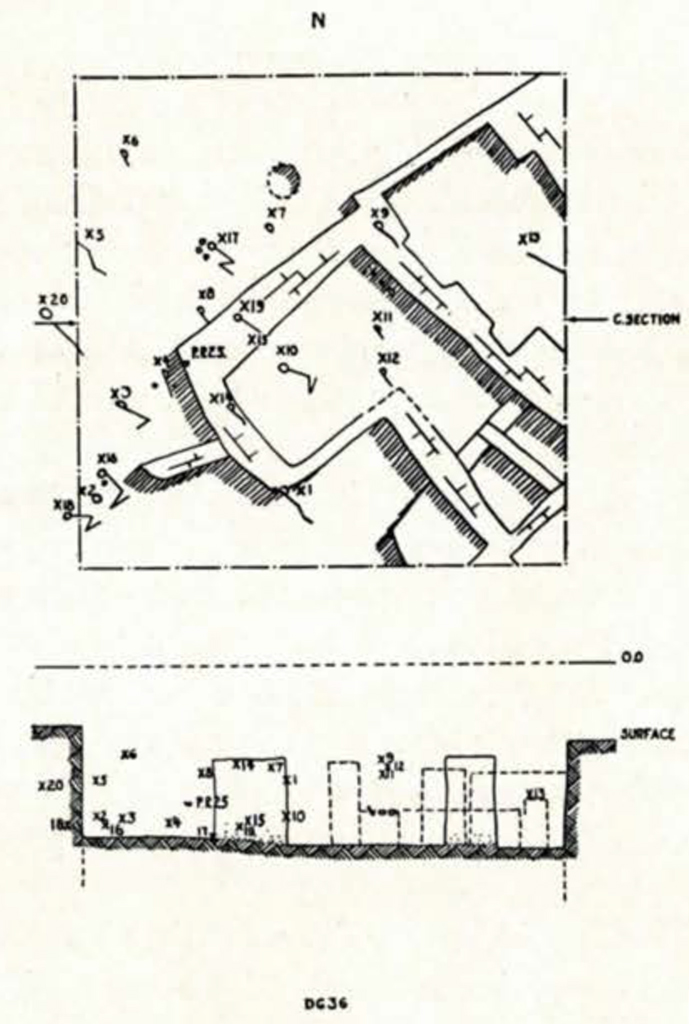
Our excavations in the Tainted Pottery Flat’ only sounded the stratum of Hissar I [Plate LXXXI] without uncovering coherent building complexes. This task was deferred until the second season. The walls enclosing small or medium sized rooms are made of straw tempered mud, like the buildings of all subsequent periods; but, as a rule, no brick marks were traceable, suggesting that the walls were constructed of mud layers rather than of individual bricks. This type of construction is still being employed for outside walls, garden enclosures, and the like, by the modern Persians.
There are no wall foundations of stone or baked brick. As a matter of fact, fired brick was not employed during any of the pre-historic Tepe Hissar periods. So far, no interesting architectural details have been determined, such as elaborate fireplaces, drainage devices, or pavements.
Pottery Vessels of Stratum 1 [Plates LXXXII-LXXXIX]
The pottery marks, archaeologically, the fundamental difference between Stratum I and the subsequent deposits. Thousands of sherds coated with shades of red or brown, many decorated with dark gray or brown patterns appeared in the rooms and in the refuse of Stratum I, and many vessels with pleasing designs, accompanied the dead. In a striking manner, the unpainted gray or black pottery of Strata II and III contrasts with the earlier ceramics.
Doubtless, the painted vessels of Stratum I constitute our most valued finds. They are creations of the most imaginative pottery-makers of all the periods that left their traces on the mound. But we may mention at this point that the Hissar I vessels are already products of an advanced pot-maker’s art, as shown by some elaborate decorations, by the wheel technique and by forms rather elaborate, though more standardized than those of the succeeding ceramic series. We found only bowls, jars, cups, and storage vessels, with two-color decoration. No polychrome vessels or sherds occur.
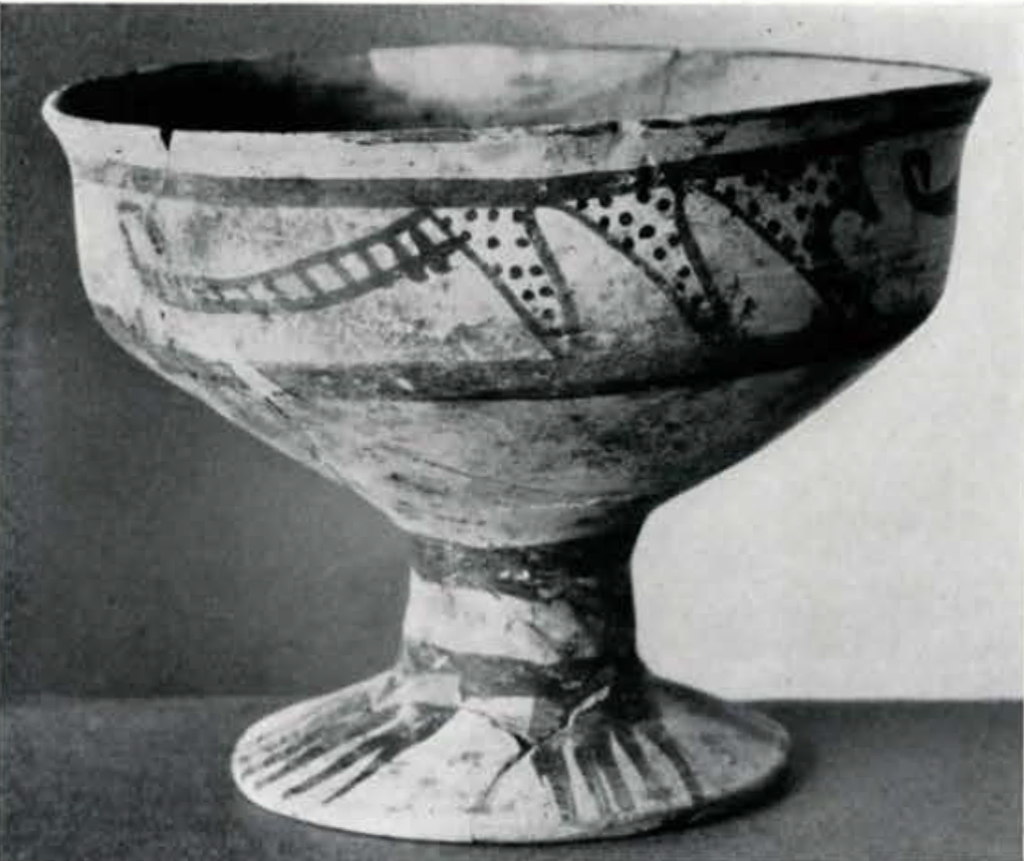
Image Numbers: 84840, 153571
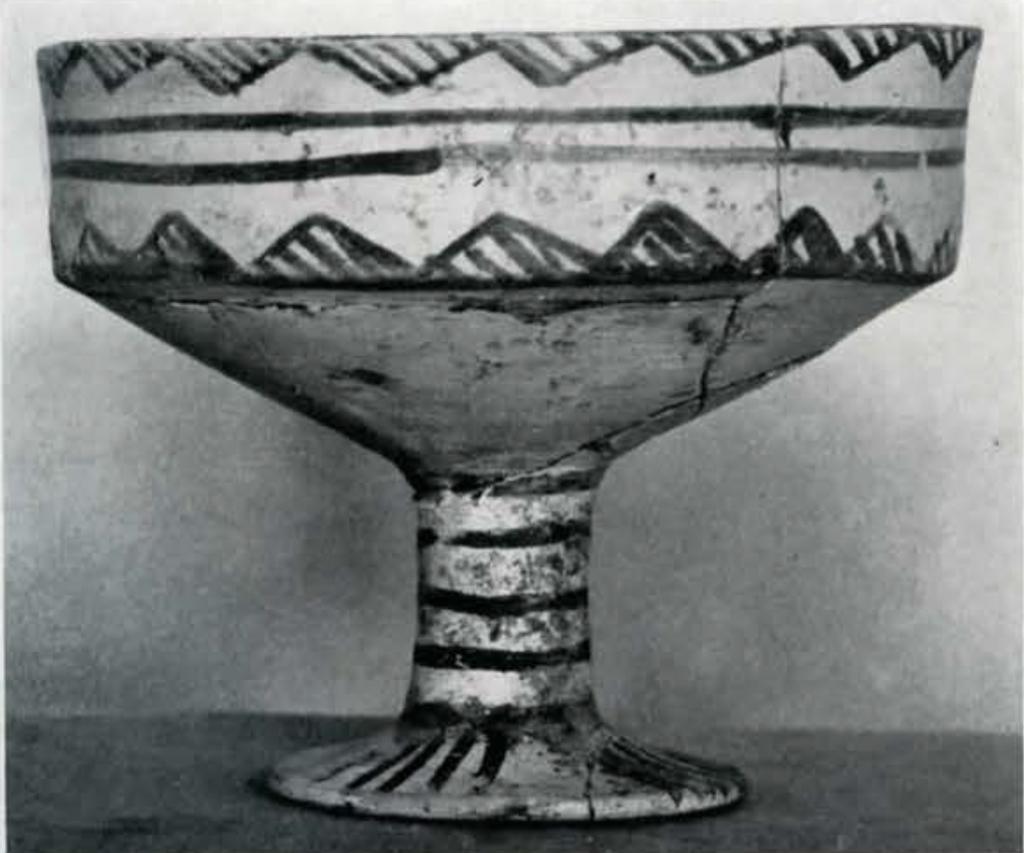
Image Numbers: 84840, 153571
The photographs and drawings sufficiently illustrate the often graceful bowls, most of them supported by stems of various heights with expanding bases. The most frequent decorations are simple, namely, series of vertical or angular dashes on the upper bodies. Other patterns include zigzag lines with hatched triangles, lozenges, waves, ‘combs’, ‘ladders’, or series of parallel angles resembling birds in flight. The most interesting designs show highly conventionalized animals, such as ibexes, gazelles, felines, birds, and perhaps even human beings. The stems are encircled by bands, and series of dashes decorate the bases.
The ornamental elements on the jars and bowls are about identical, but the jar designs extend from the contracted necks, sometimes perforated for suspension, to a point below the maximal diameter. Two jars deserve particular attention, the most elaborate [ H 802, Plates LXXXIII and LXXXVII] and the most primitive [H 1522, Plates LXXXIV and LXXXVII]. The dark brown decoration of the former is applied on light brown ground and consists mainly of three panels filled with an ibex and two gazelles (?) separated by paired ‘comb’ or branch patterns. The second jar accompanied the lowermost and presumably earliest burial uncovered. It is crude, hand-made, and decorated with dark gray comb patterns on brown red ground. It is possible that this vessel indicates an early and more primitive phase of Period I, one of the problems the solution of which was reserved for the following season.3
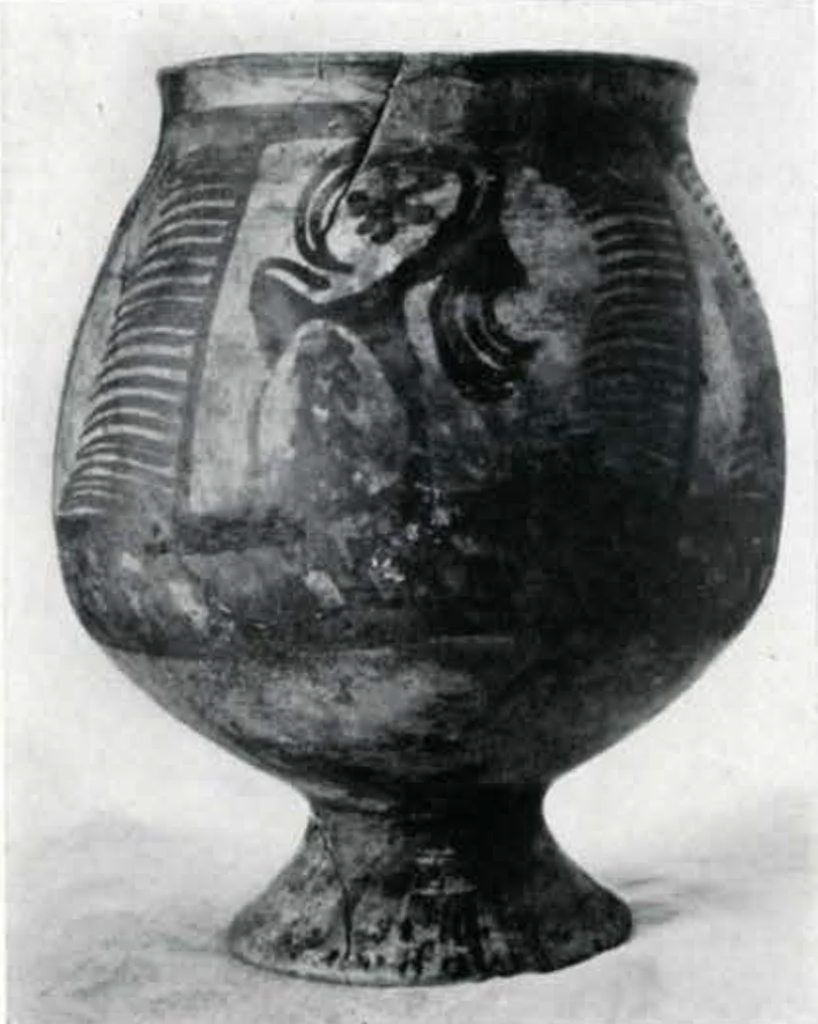
Image Number: 83198
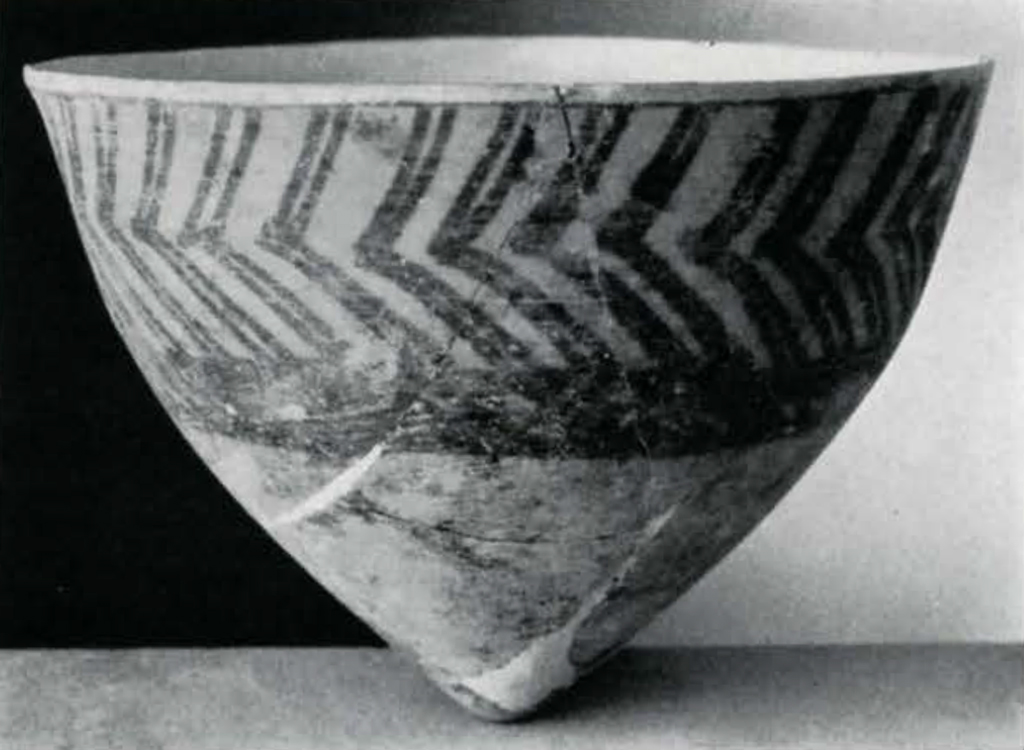
Image Number: 83198
The standard cup of Period I is an inverted convex cone, sometimes truncated and decorated with lines radiating from the base to the lip. The ground color ranges from grayish brown to buff and red shades, while the decoration is dark gray, dark brown, or purplish red. In addition to the simple but attractive line decoration, somewhat more elaborate designs occur, the elements of which are identical, as a rule, with those found on the bowls and jars. Again, the most interesting but at the same time rarest patterns show conventionalized felines, gazelles and also birds in rather humorous processions.4
The storage vessels, finally, are medium-sized jars, broad-mouthed, and decorated with solid or hatched zigzag lines [Plate LXXXIV, B].
Copper Objects of Stratum I [Plate XC]
It was customary for the Hissar I people to deposit a pin of copper in one of the vessels given to their dead. We assume they were garment pins like those very similar ones found on the chests of the skeletons of the presumably contemporaneous Ted Pottery People’ in Anatolia. Only conical, bi-conical, pyramidal and bi-pyramidal heads occur.
The copper daggers of Stratum I are quite distinct from those we found in later graves. They have rather long slender blades, with only slightly pronounced shoulders, and short round stems. No copper bracelet was found with the dead. One simple, open ring occurred in doubtful Hissar I—II refuse. Short and long points may have been used as weapons heads, forming another parallel with Early Anatolia.
Assumed bronze objects from Stratum III were analyzed by Messrs. McNeill and Brainerd of the American College in Teheran. It was shown that even these relatively late specimens contained not more than 2% of tin, while we call bronze an alloy of copper with at least more than 5% of tin.5 Thus we are rather safe in using the designation copper throughout the prehistoric periods of Tepe Hissar, until further analyses of metal objects of all strata shall correct us. Native tin, we were told, is absent in this region of the country. Besides copper, no other metal was found in Stratum I.
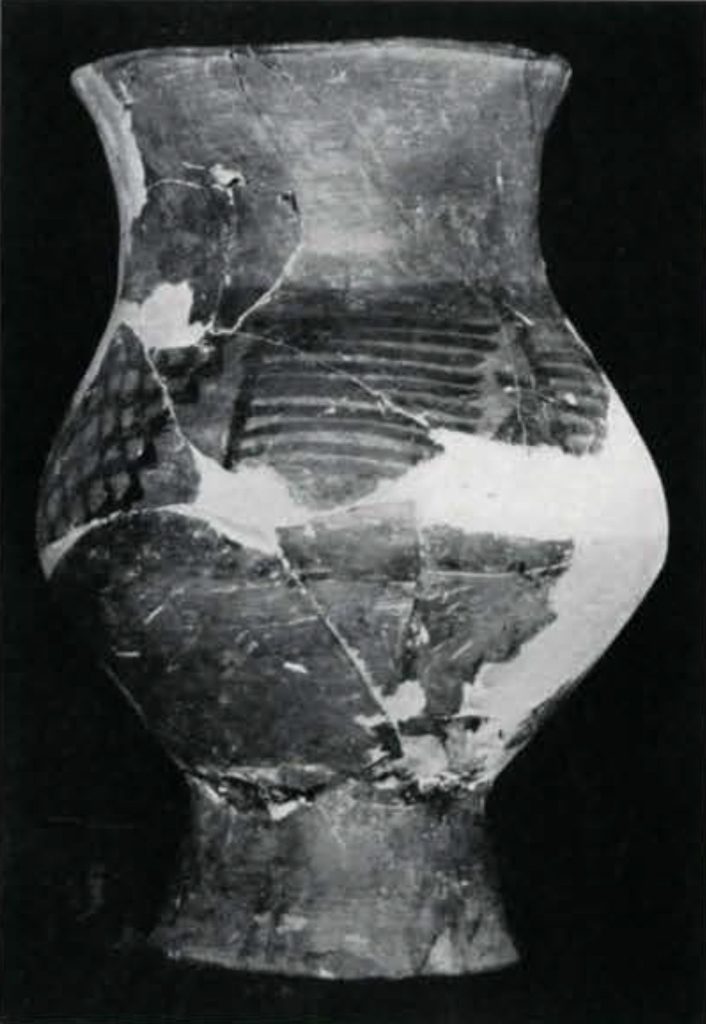
Image Numbers: 83157, 83318

Image Numbers: 83157, 83318
Seals of Stratum I [Plate XCI]
The very frequency of Hissar I ‘seals’ proves that many of them, particularly the small specimens, have simply been employed as ornaments. As many as six ‘seals’, sometimes graded in size, lay on the chests or beside the upper arms of the skeletons. But for technical reasons we consider all seal-shaped objects in this chapter.
The material is serpentine, alabaster, baked clay, gypsum and frit. The occurrence of the latter in northeast Persia during the third millennium is surprising, but there can hardly be a doubt about its character. As a matter of fact, we must state that even rudimentary glazing was apparently known to the Hissar I people, for we found patches of hard and lustrous brown or mainly green coats on seals and beads.
As a rule, the incisions on the sealing bases form simple geometrical patterns, but there is a unique, elaborate specimen [H 20, Plate XCI] found in the top refuse of Stratum I. Its base pictures two persons, of different heights, with raised arms, and an ibex and snakes (or flames) at either side of the adorants(?). The conical seal is made of buff brown pottery with a light gray brown wash.
The remaining specimens have rectangular or circular bases. Some are button-shaped. Nearly all have either perforated handles or lateral grooves for suspension.
The designs are the omnipresent oblique or square crosses filled with additional angles, lines or stipples. There are, further, concentric circles, wavy lines, ‘branches’, radiating dashes, zigzags, and the like. The type series here shown illustrates all principal forms and patterns.
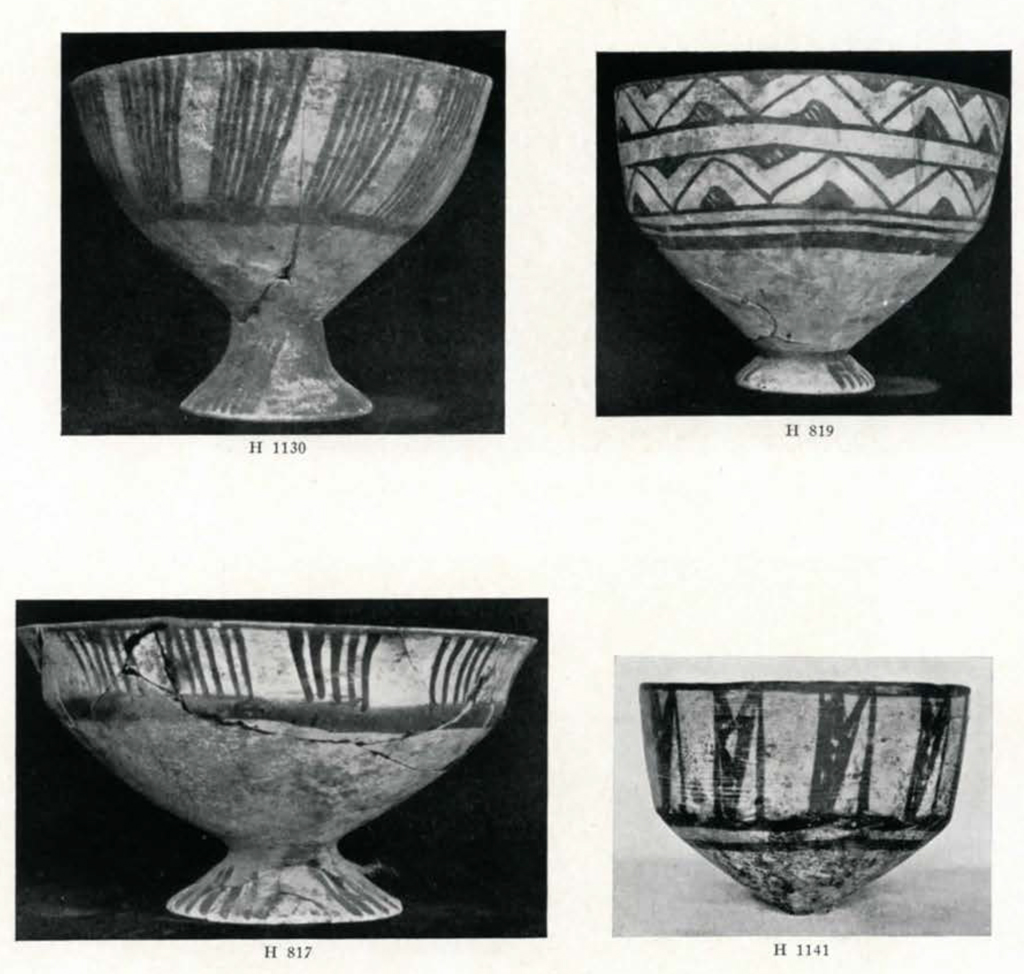
Image Numbers: 84714, 84716, 84723
Hissar I Figurines [Plate XCII, A and B]
The extraordinary frequency of animal figurines in all strata of the mound, culminating in the little zoomorphic sculptures of Stratum III, is not due to the playfulness of the ancient people. These figurines had a definite ‘utilitarian’ purpose. They were magic images of domesticated beasts and birds, made to increase their number and the wealth of the owner. Others represented game of the steppe and of the hills, to help the hunter’s luck and to protect him against the ferocious species, such as the tigers represented by the alabaster figurines of Stratum III.
The usually buff or brown colored pottery figurines of Hissar I are sometimes decorated with simple dark brown or gray lines distinguishing them from the gray brown but otherwise identical specimens of the same material, occurring in all strata of the mound. During all periods the animal most frequently represented is the sheep and the ram. But the figurines are often so crudely modeled that it is difficult to say whether sheep, ram or goat, dog, or cattle are represented. At any rate, long-horned cattle are shown by several unusually large Hissar I figurines, in addition to smaller specimens of sheep and rams. There is, further, an effigy spout (H 985) in form of a light greyish brown snake or turtle head, painted with dark brown lines and stipples.
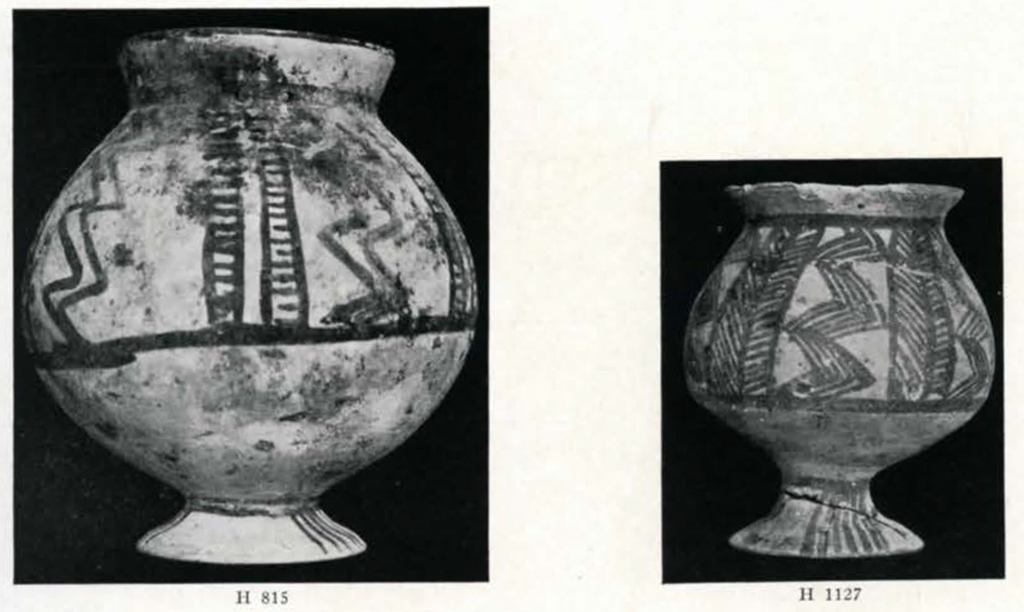
Image Number: 84721
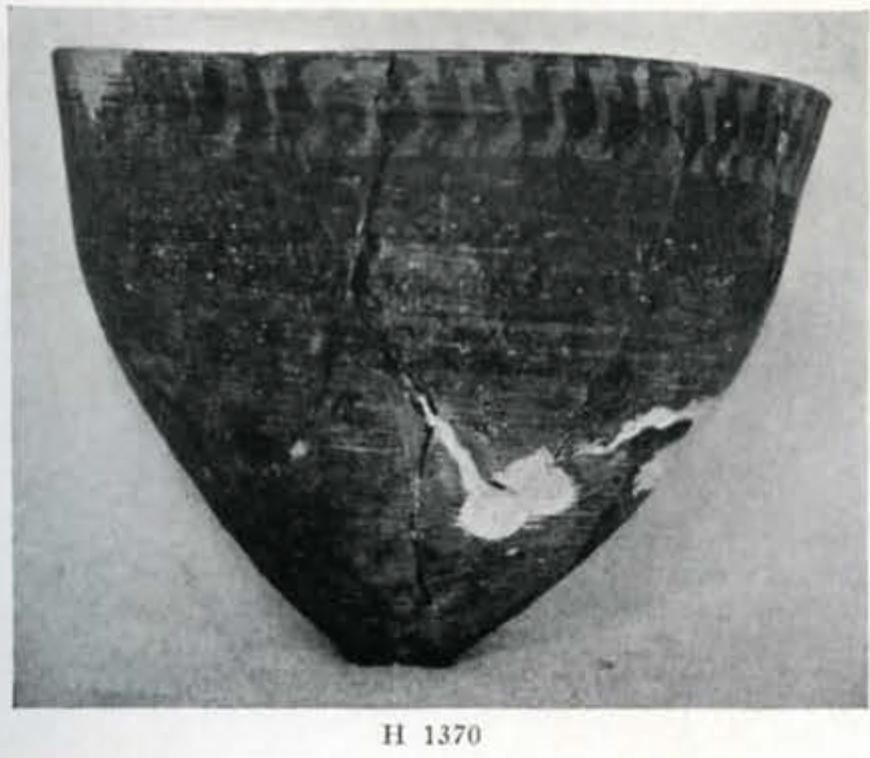
Image Number: 84730
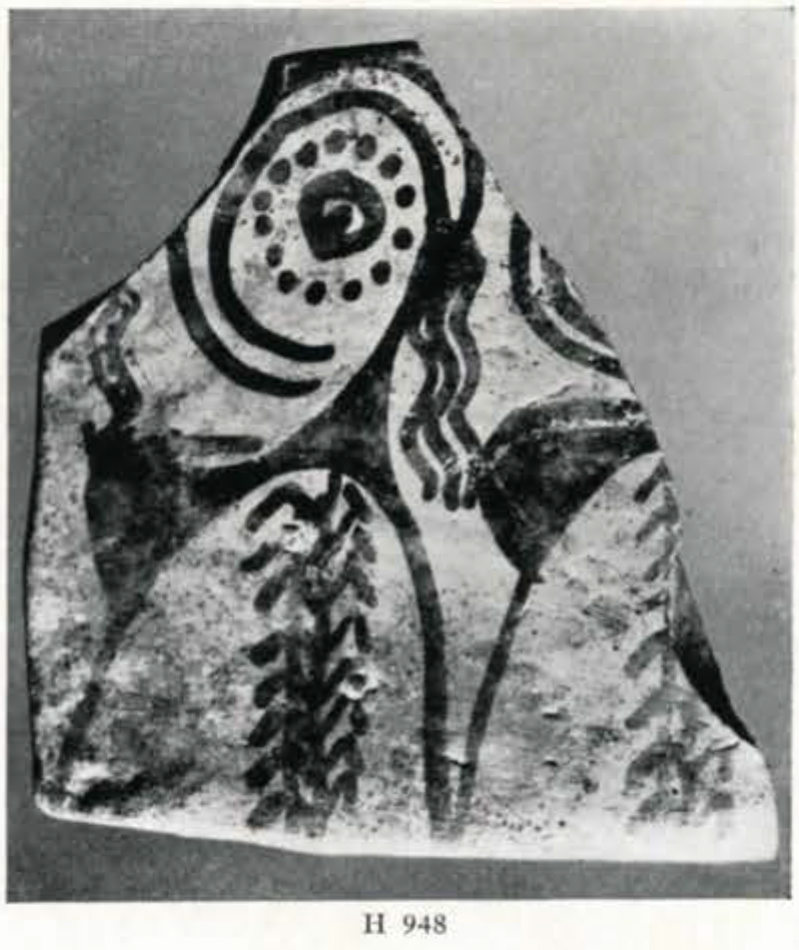
Image Number: 84721
Stone Objects of Stratum I [Plates XCII, D, and XCIII, C and D]
Though closer in time to the Age of Stone than the subsequent occupants of the site, the people of Hissar I apparently did not use a greater proportion of stone objects than the later settlers. Weapons and tools of stone had largely been displaced by copper implements. It remained to be seen whether earlier deposits underlie the towns of an advanced Metal Age.6
So far, there is not one implement of stone which may count as a definite guide fossil of Stratum I. Celts, chalcedony flakes, cores, and scrapers occur in all pre-historic strata of the mound, and, as a matter of fact, in deposits of a similar nature all over the earth.
The whetstones, the polishing stones, fragments of hand grinders, a mortar, a ring weight, an arrow head, perforated disks and the like have no characteristic form distinguishing them from the corresponding categories of the later periods. Small serpentine fragments of odd forms, suggesting parts of ornaments or inlays, may perhaps prove typical for Stratum I.
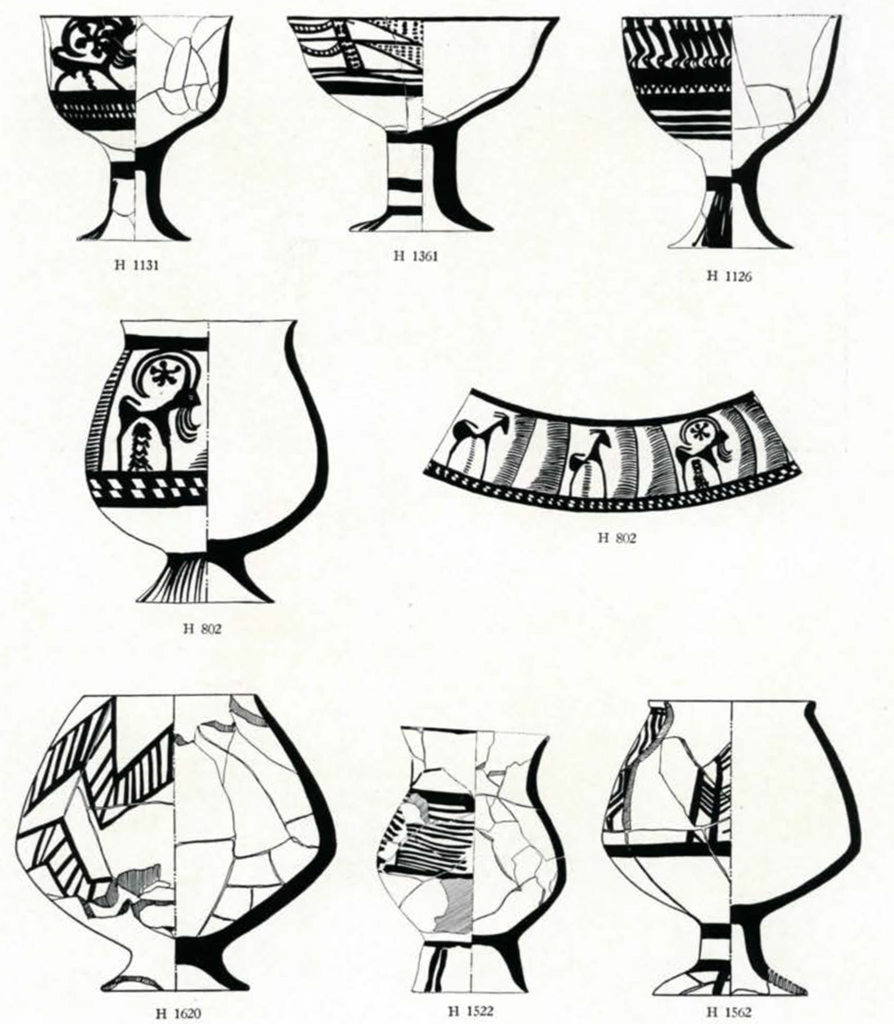
Image Numbers: 83556, 83563, 83552
Spindle Whorls and Miscellaneous Clay and Pottery Objects of Stratum I
We are certain that the animal bones from the Painted Pottery Stratum will supplement our evidence as to the importance of the sheep, suggested by the numerous figurines, and by the whorls giving momentum to the spindle on which yarn of wool was spun. All whorls of Hissar I, found to date, are made of baked clay and have a form distinguishing them from the later specimens. They resemble miniature cups with perforated bottom. But there are some perforated disks and flat ‘hi-cones’, which may occur in any stratum.
Miscellaneous pottery objects include numerous laterally perforated disks which were perhaps used as ornaments. There are, further, problematical crescents, a star with perforation for suspension, conoidal clay objects ending in two horns, clay hi-cones present in all strata, and perhaps used as weights for some device. Plain conoidal objects, spool-shaped disks, and plain or painted potsherds re-ground to discoid shape conclude the series defined to date.
Bone Objects of Stratum I [Plate XCIII, B]
The scarceness of bone implements in all Tepe Hissar strata is somewhat puzzling. Copper seems to have been used for such types of utensils which could have been made of bone. At the same time, all three objects here shown, two awls and a perforated disk, occurred in a layer containing also Hissar II refuse and objects.
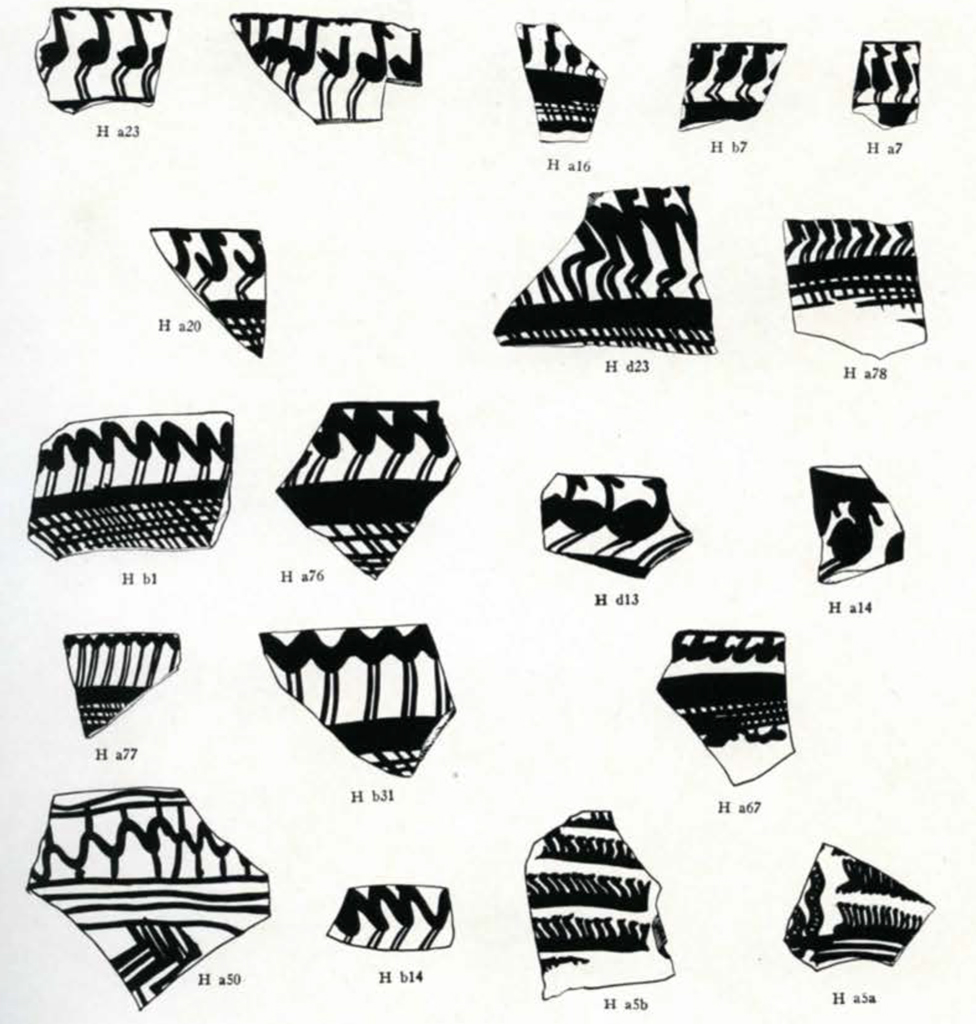
Image Number: 83571
Ornaments of the Hissar I People [Plate XCIV]
After the end of the excavation in the fall of 1931, eight of our best workers strung beads for fourteen days and thus restored, in the original sequence where possible, the bracelets, armlets, necklaces and belts of the dead of Hissar I. The wealth of frit, gypsum, and other stone beads, once ornamenting these people, is astonishing. According to our estimate we found between 150,000 and 200,000 units of small disks, rings, tubes, biconoid and oblong beads with sometimes slightly iridescent white or greenish tan and black shades, clinging to the upper arms, wrists, necks, ankles, and pelvic bones of male and female skeletons. Carnelian, alabaster, bitumen, serpentine, shell and bone beads and pendants occurred in lesser numbers. Some oblong frit and gypsum beads are decorated with delicate incised zigzags or herring bone patterns, but no particularly elaborate forms appeared.
The Dead of Hissar I [Plate XCV]
Through the past millennia the graves of the ancient settlers preserved for us the precious vessels, weapons, ornaments, seals, and other objects of their time, which otherwise would have been crushed to bits by the crumbling walls and roofs of their former homes, or carried off as loot by foreign conquerors, or simply re-used and eventually broken and discarded by survivors.
The dead of all strata of the mound were interred below the floor of the buildings or below the surface of the occupied area in general. The relations between burials and the superimposed buildings are often not definitely determinable in composite sites, particularly if large sections of buildings have disappeared. At any rate, burials occur below every building in any pre-historic stratum of Tepe Hissar, and also at such spots where architectural remains were not traceable. Massed burials, suggesting a definite necropolis, were found only in Stratum III on the main mound.
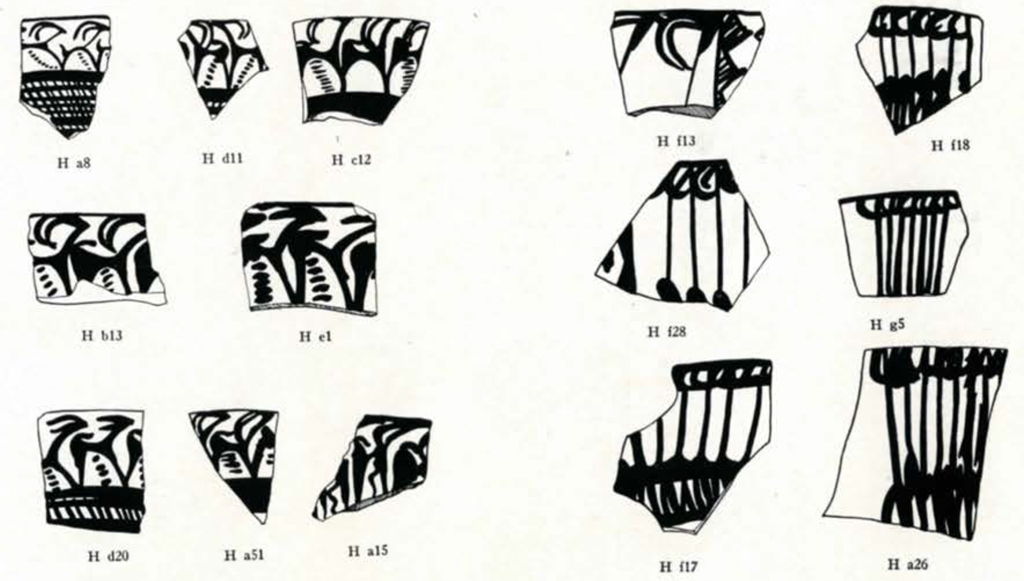
Image Number: 83570
The burials of Hissar I showed, as a rule, no traces of grave enclosures, coffins, or the like. In one case only, a thin mud brick wall bordered a burial. As to garments, at times, traces of white patches on the bones and on the surrounding soil suggested remains of fabrics, or matting. This was noticed in graves of all periods.
There were only two definite rules concerning the burial position of the Hissar I dead. The legs were contracted in each case and the face with few exceptions pointed towards the right side, paralleled by the position of the body. The arms and the hands had various positions. In some instances the hands lay in front of the face, and suggested a praying position. Certain psychological qualities, such as fear, calmness, resignation or combat, still expressed mainly by the lifeless hands of the Tepe Hissar people will be dealt with in the final publication, in addition to such considerations as mortality during certain ages, proportion of males and females, and the like. There were hardly any well preserved skeletons in Stratum I. One of the tasks of the second season was to obtain good skeletal material of this early period as means of comparison with the numerous good skulls and other bones recovered in the upper strata. The entire osteological material will be worked up in America.
The mortuary equipment of the Hissar I dead consisted of painted bowls, jars, and cups, sometimes single or arranged in a group, usually near the head. A copper pin often stuck in the dirt filling of the vessels, or lay in the refuse close to the head. Seals or seal-shaped ornaments, single or in groups, had been deposited on the chests or on the arms of men and women while an amazing number of beads in forms of bracelets, anklets, necklaces and belts ornamented the dead of Stratum I.
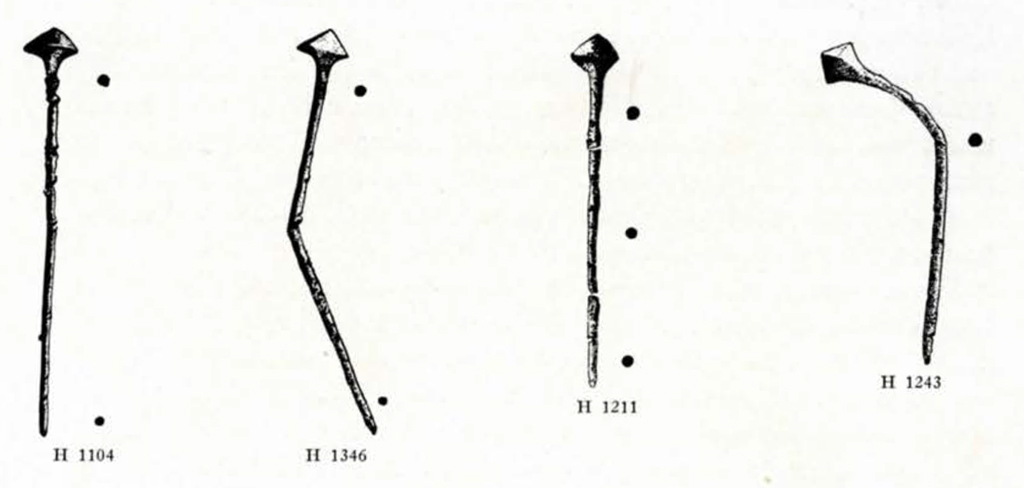
Image Numbers: 83574, 83575
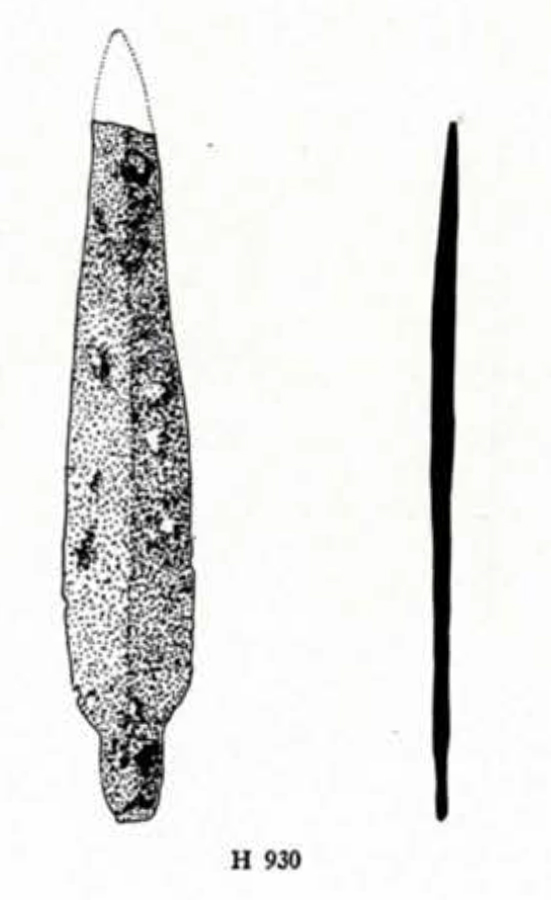
Image Number: 83573

The End of Period I
The most delicate phases of an excavation are those concerned with the top and bottom deposits of a stratum, which often contain the clues for the beginning and the end of culture periods. The end of a period may have been due either to uncontrollable forces, such as famine, plague, or other epidemics, accompanied by emigrations, or it may have been brought about by dynamic changes due to the energy of a ruler or groups of the population, or, finally, invading foreign people may have erased in part or in toto the indigenous culture of a particular region and implanted their own.
Our clues suggest that the three prehistoric culture periods of Tepe Hissar ended in accordance with the three ways defined above. The numerous communal burials of Stratum III, and other clues, suggest that the last settlers were stricken by an epidemic; the ceramics and other categories of Periods II and III suggest that the former faded into the latter; while the people of Hissar H came as foreign invaders, implanting their culture on that of the settlers of Hissar I. There can he little doubt that the natives fought against die newcomers, but we found no traces of a battle in the top refuse of Stratum I. On the contrary, definite clues point towards mutual absorption of new and old features, for in the earliest graves of Period II we found, side by side, decorated vessels of Hissar I and black pottery of Hissar II modeled after the fashion of painted bowls and jars with stems and discoid bases.
There are not yet enough crania of Hissar I and II definitely to determine racial distinctions between the two people, but, as far as we could observe, pronounced long skulls appear in Stratum II, while broader skulls seem to have prevailed among the people of the Painted Pottery Age.
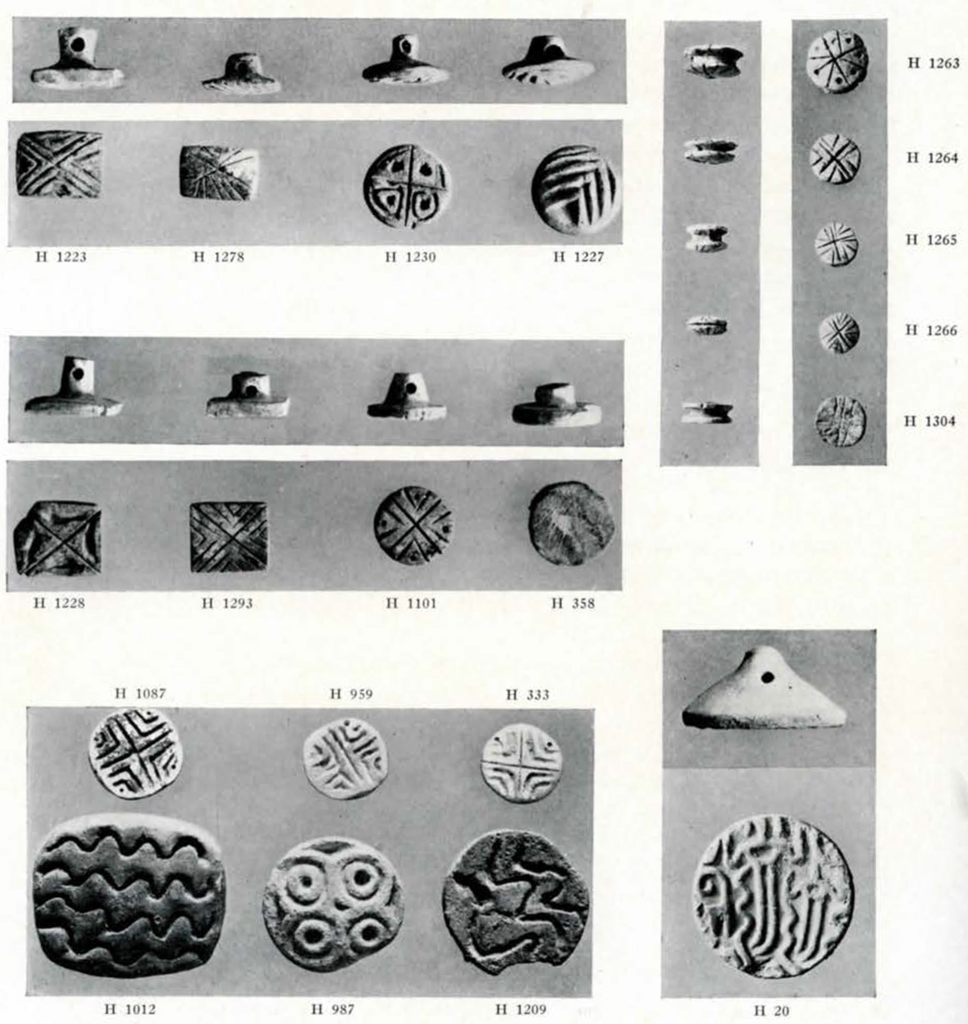
Image Numbers: 84919, 153993
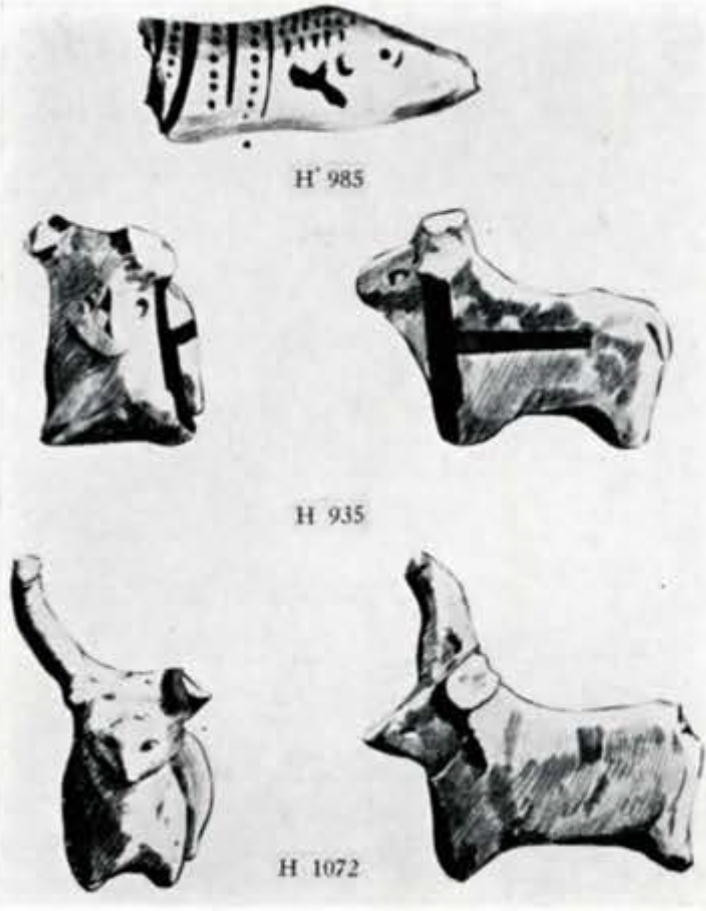
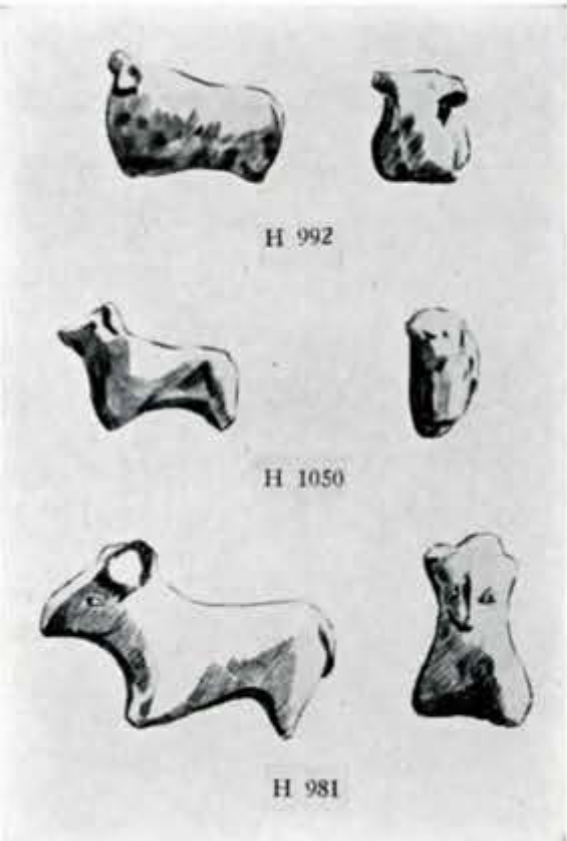
Image Number: 83576
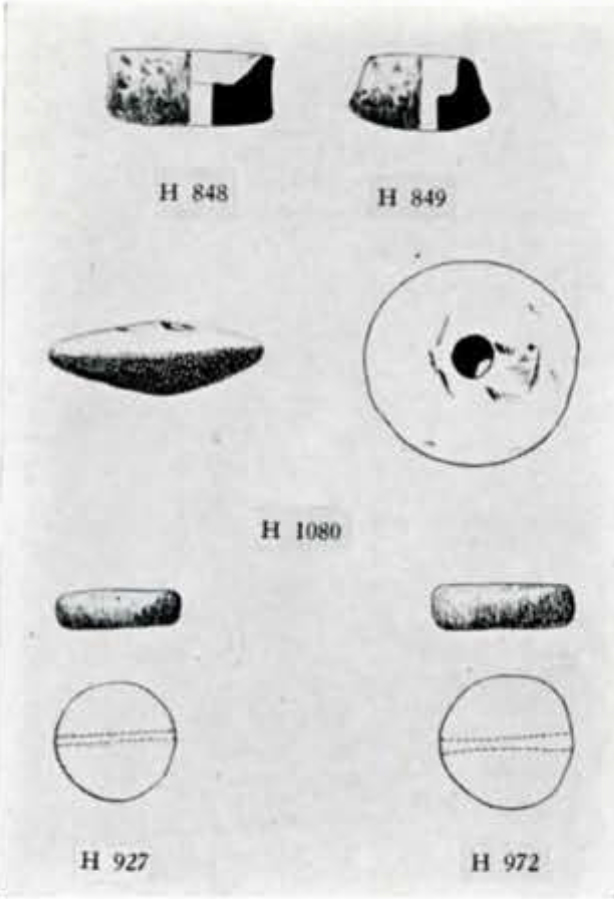
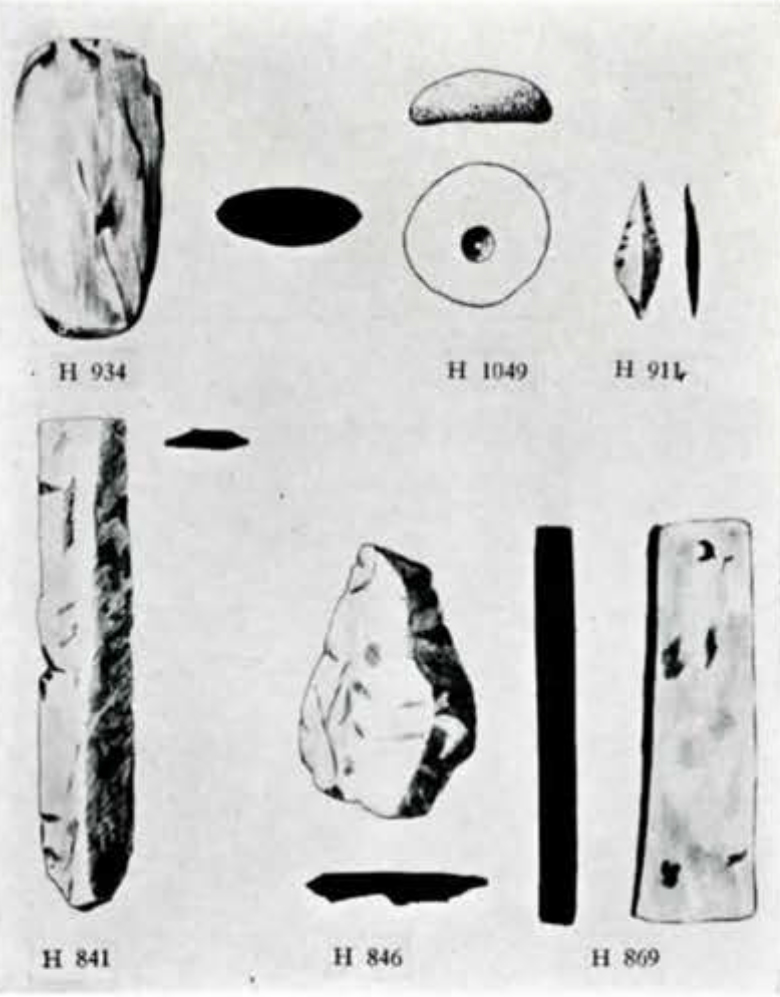
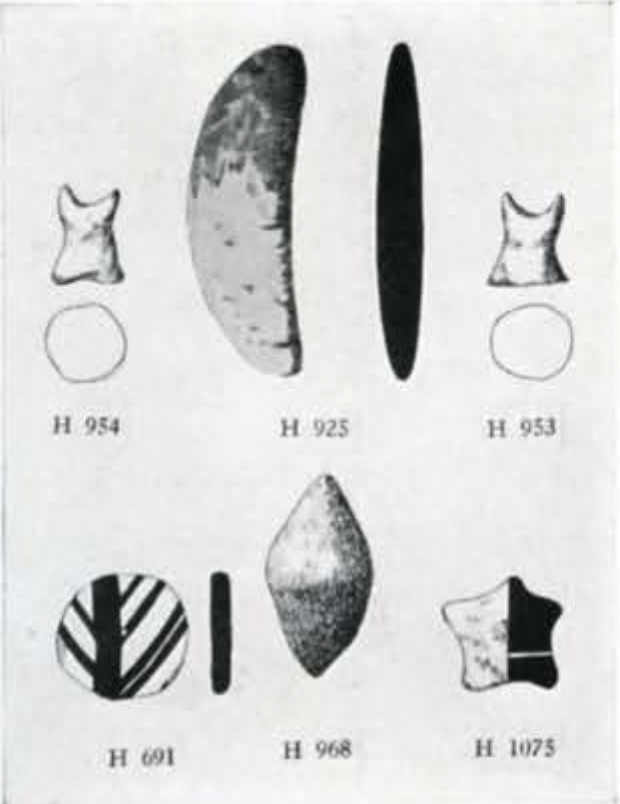
Image Numbers: 83577, 83578, 83579
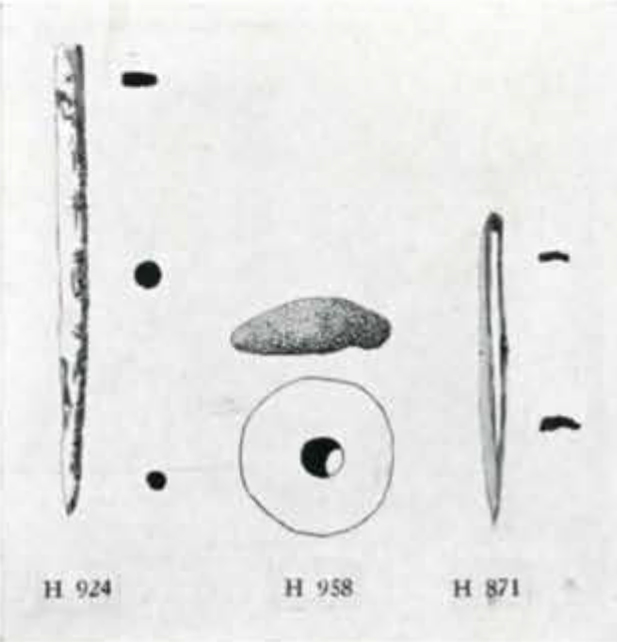
Image Number: 83580
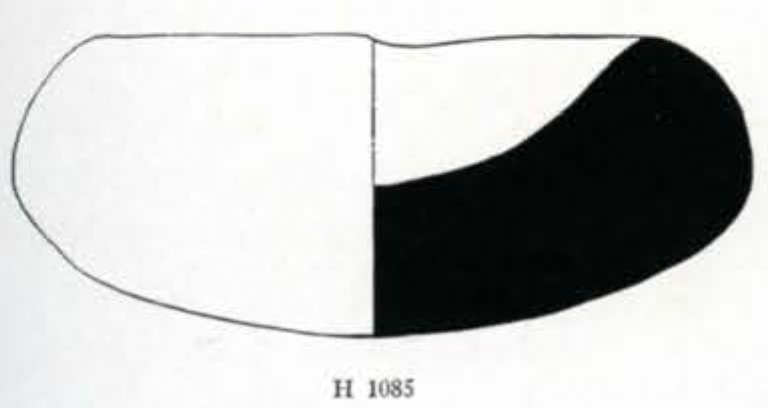
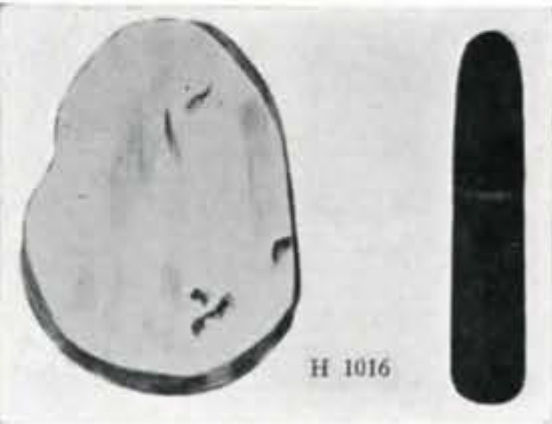

Image Number: 83262
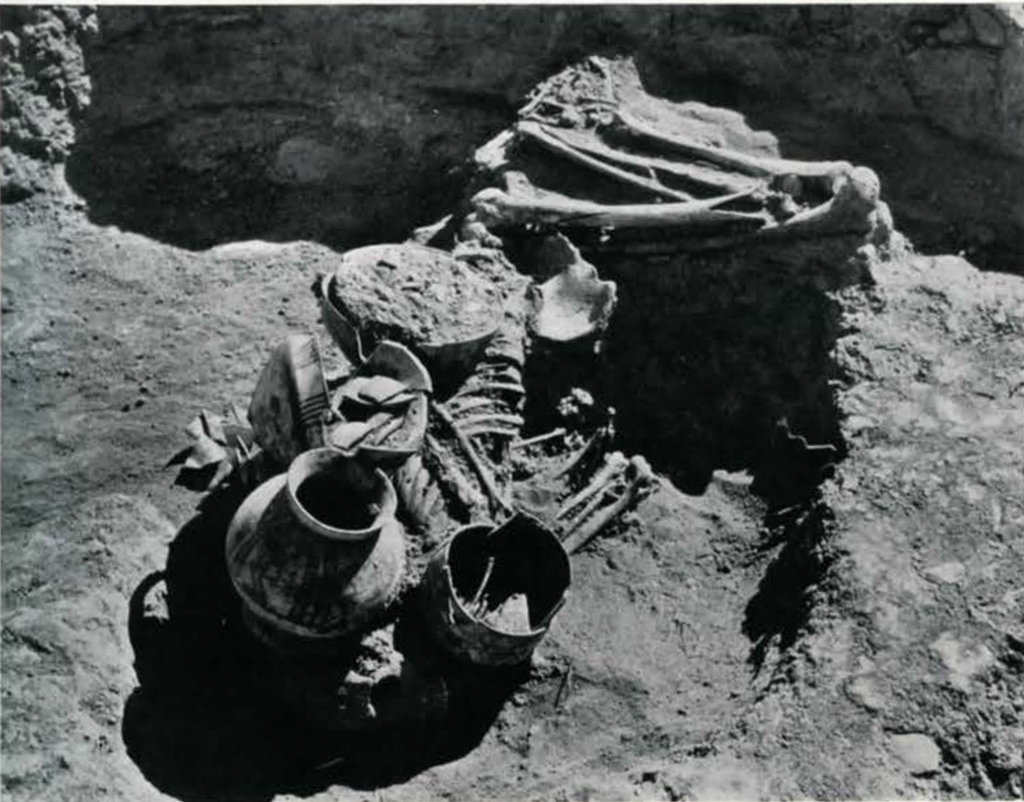
Image Number: 83041
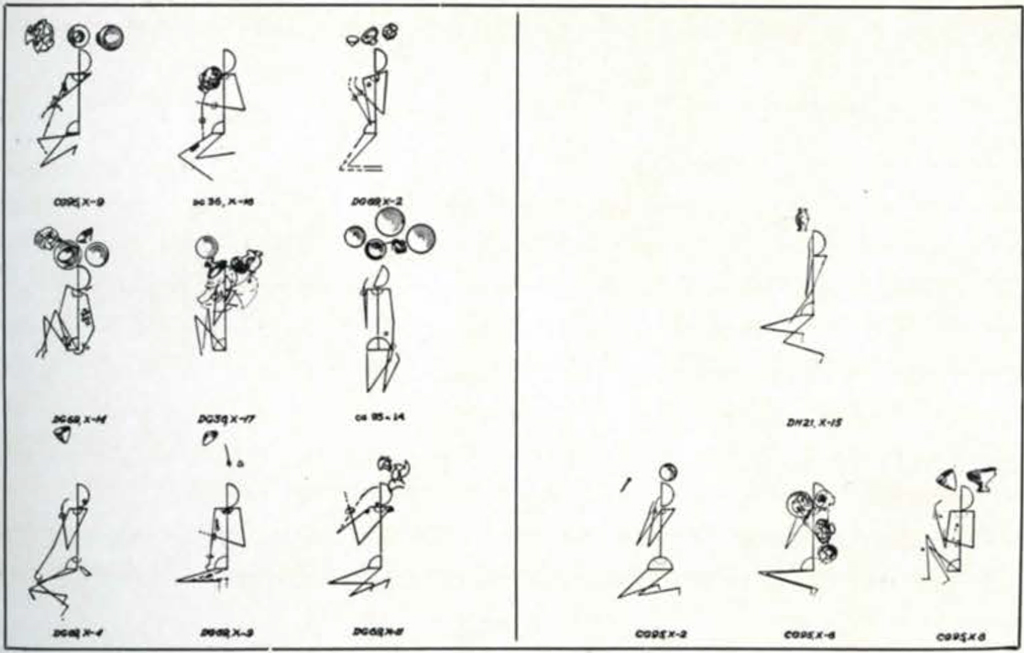
3 During the second season the lowest sublayer of Period 1, defined by such pottery, was definitely determined. ↪
4 The groups of drawings of such designs on potsherds (Plates LXXXVIII and LXXXIX] show extremely interesting phases of conventionalization with which we will deal fully in the detailed publication to follow. The last, well-definable stages of the gazelle pattern with exaggerated necks is shown in the chapter on Hissar II pottery. The conventionalization of the amusing bird pattern is particularly striking. We must state, however, that often the phases of conventionalization do not seem to be apart in time. We found several modifications of the same pattern at various stages of conventionalization in the same levels of Hissar L Thus individual playfulness of the pottery painters, as frequently as the influence of time, seem to have conventionalized the Hissar I ornamentation.
To a certain extent we succeeded even during the first season in distinguishing some patterns of Period I decoration which are earlier or later than the hulk. Certain painted vessels were actually found in the earliest Hissar II graves together with gray vessels of the second period, an extremely interesting fart which is dealt with in the chapter on Hissar II pottery below. Again, one simple design on a definite type of usually buff-colored cup persists to the very end of Period III, after ail other varieties of painted ware had long since disappeared [Plate CXVII]. ↪
5 Three additional analyses of copper objects were made by Mr. W. C. McNeill, after this report was written. The analyses showed the following percentages of tin in samples from the three Hissar Strata:
Hissar I (early)…..1.72%
Hissar II……061%
Hisser III…..2.99%
Though the percentage of tin in the Hisser III sample is rather high, compared with the other specimens from the preceding layers, it is not high enough to consider it artificially alloyed with the copper of the specimen. In addition Mr. MrNeill states that his figures are apt to be high, due to certain impurities he was not able to correct. A qualitative analysis of the objects under consideration will follow. We think this additional information justifies the term Copper Age for our region, and the designation ‘copper instead of ‘bronze’. ↪
6 During the second season it was determined that copper objects already occurred in the lowest deposits. ↪

